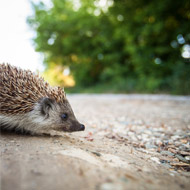Major project set to save species from extinction

The project will also help 200 species that are under threat, including hedgehogs.
A ground-breaking new project has seen UK wildlife charities and conservation bodies come together for the first time, in a bid to save threatened species from extinction.
The ambitious programme, Back from the Brink, aims to rescue 20 species that are on the cusp of extinction. It will also help another 200 species that are under threat, including the grey long-eared bat, pine marten, willow tit, lesser butterfly orchid and hedgehog.
Natural England chairman Andrew Sells said: “This project is nothing short of a revolution in conservation. Never before have so many people pledged to work together to save so many of England’s individual plants and animals. It comes not a moment too soon for many important species and draws together a wide range of people and organisations.”
Back from the Brink has been made possible by £4.6 million funding from the Heritage Lottery Fund.
Launching the project in Windsor, conservationists and volunteers prematurely aged specially selected trees, to create much-needed homes for thousands of creatures at Great Windsor Park. This involves simulating exposure to the elements and fungi that a tree would expect to see over the course of a century, in just one afternoon.
Over 2,000 species in the UK are dependent on ancient trees, but this important habitat is in decline as not enough younger trees are maturing in time to fill the gap when existing ancients pass away. As a result, species that rely on deadwood and ancient trees will have no new habitat in which to live.
Buglife’s tree experts have found a number of trees that, with a little work, can take on the features of ancients, ensuring the many rare species found in the park continue to have a suitable habitat.
School children, college students and local volunteers will also be planting native trees in the park.



 BSAVA is to partner with BVA Live (11-12 June 2026) to champion clinical research.
BSAVA is to partner with BVA Live (11-12 June 2026) to champion clinical research.